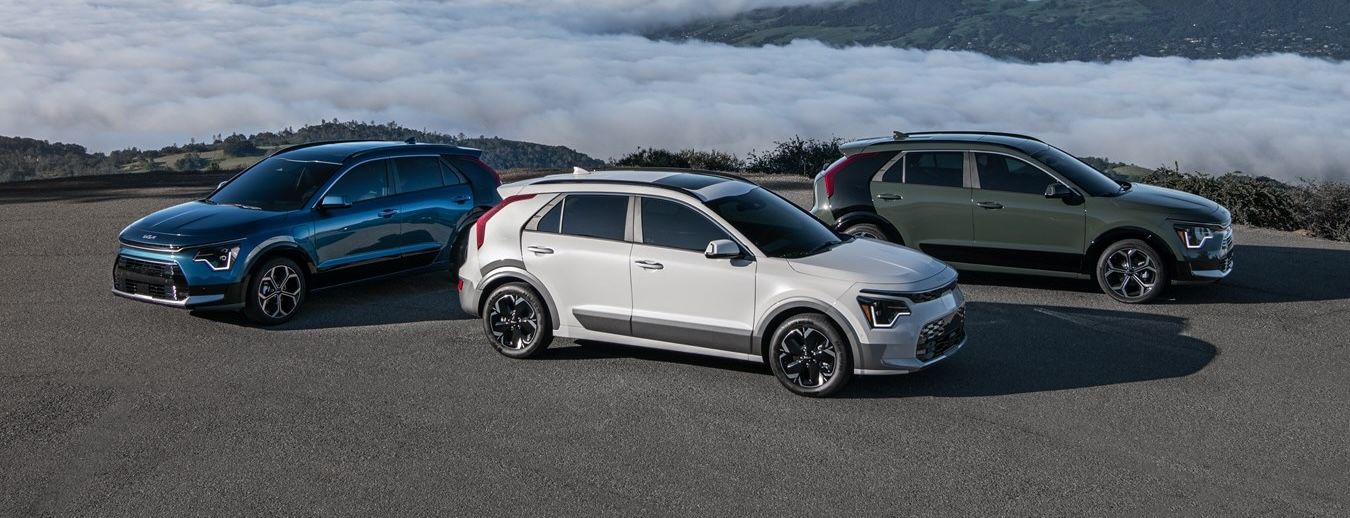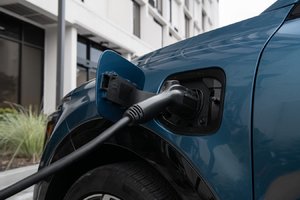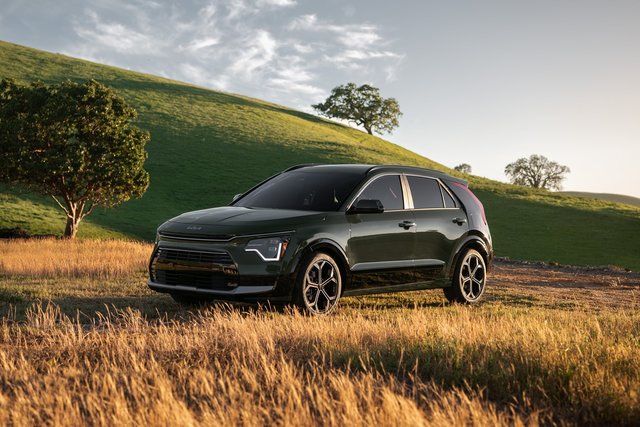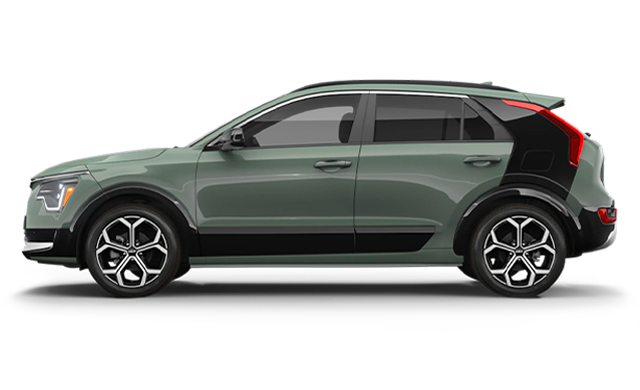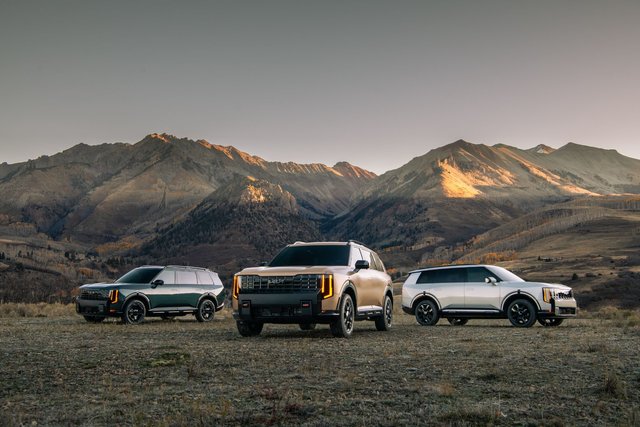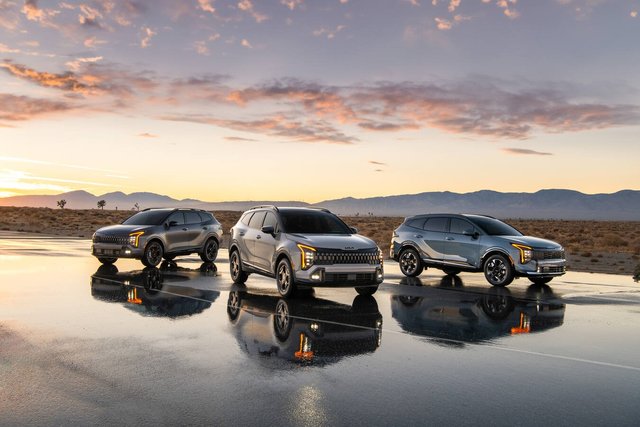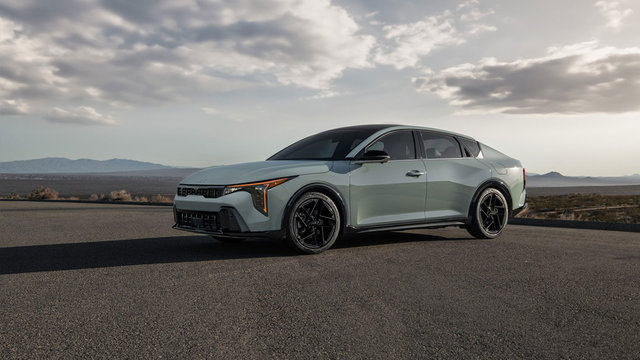Kia Niro HEV vs. Kia Niro PHEV: A Comparative Look at Powertrains and Trims
The 2025 Kia Niro offers drivers two distinct electrified options: the Hybrid Electric Vehicle (HEV) and the Plug-in Hybrid Electric Vehicle (PHEV). While both aim to maximize fuel efficiency and reduce emissions, they cater to slightly different driving needs through their unique powertrains and corresponding trim offerings.
Powertrain and Performance: Tailored Electrification
Both the Niro HEV and PHEV share a foundation, utilizing a 1.6L GDI (Gasoline Direct Injection) inline 4-cylinder engine and a permanent magnet synchronous motor. They also both feature a front-wheel drive (FWD) system and recommend regular unleaded fuel. However, the key differences lie in their electric capabilities and overall power output.
The 2025 Kia Niro HEV combines its gasoline engine (104 hp) with a 32 kW (43 hp) electric motor. This setup yields a combined performance of 139 horsepower and 195 lb-ft. of torque. The HEV is equipped with a 1.32 kWh lithium-ion polymer battery. Its fuel consumption is rated at 4.4 L/100 km combined for the LX, EX, and EX Premium trims, and 4.8 L/100 km combined for the SX trim. The HEV has a larger fuel tank capacity of 42 L.
In contrast, the 2025 Kia Niro PHEV features a more robust electric motor and a larger battery, emphasizing its plug-in capabilities. It delivers a combined horsepower of 180 hp at 5,700 rpm and the same 195 lb.-ft. of torque at 4,000 rpm as the HEV. The PHEV's Lithium-Ion Polymer battery boasts an 11.1 kWh capacity, enabling an all-electric range of up to 53 km. Its combined gasoline and electric fuel consumption is remarkably efficient at 2.1 L/100 km, with a gasoline-only consumption of 4.8 L/100 km. The PHEV has a slightly smaller fuel tank capacity of 37 L. This extended electric range and efficiency make the PHEV ideal for shorter daily commutes on pure electric power, while the gasoline engine provides the flexibility for longer trips.
| Powertrain |
ICE Engine |
Electric Motor |
Horsepower |
Battery |
L/100 km |
| Hybrid |
1.6L GDI I4 |
32 kW |
180 |
1.32 kWh |
4.4 - 4.8 |
| Plug-In Hybrid |
1.6L GDI I4 |
32 kW |
139 |
11.1 kWh |
2.1 - 4.8 |
Trim Offerings
Both the Niro HEV and PHEV share similar trim nomenclature and many common features, ensuring a high level of comfort, technology, and safety across the lineup.
Common Standard Features (Across both HEV and PHEV LX trims)
- 16-inch alloy wheels
- Automatic LED headlights with positioning
- Heated and power-adjustable body-coloured side-view mirrors
- Front solar glass and rear privacy tint glass
- 7 airbags, Electronic Stability Control (ESC), 4-wheel anti-lock braking system (ABS), Hill-assist control (HAC), Tire Pressure Monitoring System (TPMS)
- Lane Keeping and Follow Assist, Forward Collision-Avoidance Assist, Rear Occupant Alert, Blind Spot Collision-Avoidance Assist, Rear Cross-Traffic Avoidance Assist
- Rearview camera with dynamic guidelines
- 8-inch Display audio with six speakers, Bluetooth, Apple CarPlay, and Android Auto integration
- Heated front seats
- 4.2-inch TFT LCD Supervision instrument cluster
- Steering wheel-mounted audio controls
- Keyless entry
- Drive Mode Select
- Dual-zone automatic climate control
- Cloth seats, 60:40 split-folding rear seats
Distinguishing Features by Trim (HEV vs. PHEV)
While many features align, the HEV offers an additional top-tier "SX" trim not present in the PHEV lineup.
EX Trim (HEV & PHEV): Both EX trims feature enhancements, including sideview mirror signal repeaters, roof rails, Forward Collision-Avoidance Assist with junction turning function, Smart Cruise Control with 'Stop & Go' functionality, Highway Driving Assist (HDA), and Rear parking sensors. Technology upgrades include Kia Connect, a 10.25-inch multimedia interface with integrated navigation, SiriusXM satellite radio, Smart key with push-button start, Remote car starter, and a Wireless phone charger. Interior enhancements include cloth and synthetic leather seats, as well as a synthetic leather-wrapped and heated steering wheel.
EX Premium Trim (HEV & PHEV): This trim further enhances both models with a power sunroof and a smart power liftgate. Interior upgrades include a power-adjustable driver's seat with lumbar support and LED interior lighting. The HEV EX Premium retains the 4.2" TFT LCD Supervision instrument cluster, while the PHEV EX Premium upgrades to a 10.25" TFT LCD Supervision instrument cluster.
HEV-Exclusive SX Trim: The HEV's top-tier SX trim is distinguished by 18-inch alloy wheels, full LED headlights, LED fog lights, power-folding outside mirrors, and laminated front windows. It also features a black and chrome-coated grille, chrome-coated front and rear skid plate accents, and split-chrome door handles. Additional safety includes front parking sensors. Key technology highlights for the SX include a Harman Kardon premium audio system, Digital Key 2 Touch, and a Heads-up Display (HUD) system. Interior luxuries include synthetic leather seats, a driver's seat memory function, a power-adjustable passenger seat, air-cooled front seats, heated rear seats, and deluxe pedals.
Cargo Capacity: A Small Trade-off for Plug-in Capability
There is a slight difference in cargo capacity between the two models, likely due to the larger battery pack in the PHEV.
- Kia Niro HEV: Offers 646 L (22.8 cu. ft.) of cargo space with the rear seats up, expanding to 1,805 L (63.7 cu. ft.) with the rear seats folded.
- Kia Niro PHEV: Provides 550 L (19.4 cu. ft.) of cargo capacity with the rear seats up, and 1,546 L (54.6 cu. ft.) with the rear seats folded.
In conclusion, both the 2025 Kia Niro HEV and PHEV offer compelling options for environmentally conscious drivers. The HEV is a great choice for those seeking excellent fuel economy without the need for external charging, offering a wider range of trims, including the premium SX. The PHEV, with its significant all-electric range and even lower combined fuel consumption, is ideal for drivers who can regularly plug in and prioritize zero-emission commuting while still having the flexibility of a gasoline engine for longer journeys. The choice ultimately depends on individual driving habits, access to charging, and desired features.



